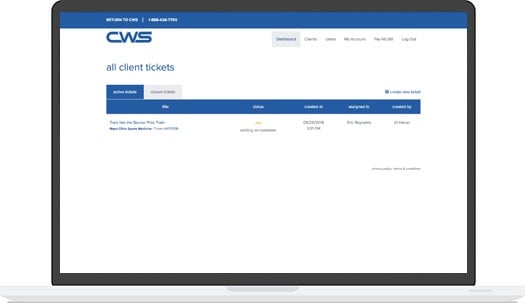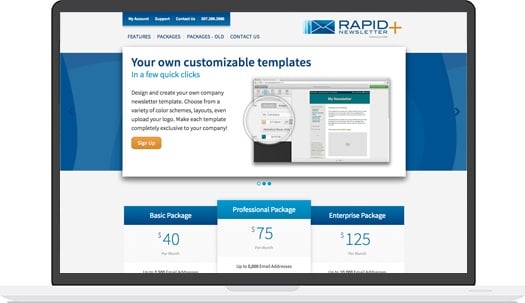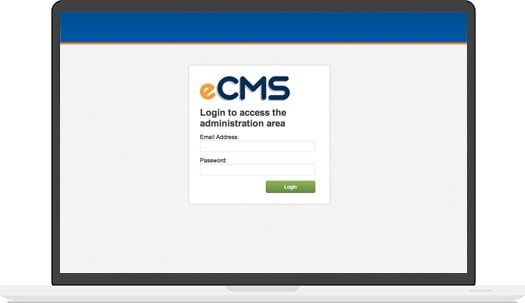Recently, I was invited to sit through a presentation on traditional media placement with CWS’s Director of Business Development, Sheryl Barlow. I was feeling pretty good about my understanding of traditional media as I walked into the presentation—and I consider myself to be at the Average-Joe level of knowledge—but you know what they say about people who make assumptions! I left that presentation feeling as though Sheryl had been speaking another language.
It didn’t take long to realize that the intricacies and tricks she knows about traditional media placement are not intuitive, and cannot be found in a simple Google search. I had more questions, so I decided to pick her brain about traditional media placement. Here’s what she had to say:
Traditional Media Basics
Me: Define traditional media.
Sheryl: Traditional media are forms of mass communication that include television, radio, billboards, and printed media like newspaper and magazines.
Me: How long have you been placing traditional media? How many dollars have you placed?
Sheryl: Since 2001, but I’ve been working in and around it for years before that. I’d estimate that I’ve place around $5 million.
Me: When do people typically use traditional media?
Sheryl: People turn to traditional media when they want to introduce a new product, promote a sale, build their brand, or reach people who aren’t online.
Pros and Cons of Going Traditional
Me: What are the benefits of using traditional media?
Sheryl: These medias are great when you want to evoke emotion or when you want to reach a variety of people. Additionally, you can use local connections and incorporate sponsorships in the mix.
Me: What might be some drawbacks of using these media?
Sheryl: It’s hard to get solid data and track traditional media results. Often, it’s not until the campaign is over that we know if it was successful or not. Even then you may not know if it worked.
Digital Versus Traditional
Me: How is traditional media different than digital media?
Sheryl: Both types of placement count as advertising, but the goals and tactics of each are different.
- Digital Media
Digital is focused on targeting highly specific demographics and almost always has a call-to-action which drives people to a digital environment where they can do something specific; make a purchase, fill out a form, take a survey, etc. Additionally, getting statistics and consumer insights through digital pathways is an important part of digital media placement.
- Traditional Media
Traditional media is often more about branding a company, creating a story, and emotionally appealing to a broad range of people. It’s a longer-term method to build a certain perception of a product or company. It’s harder to track though. Typically, the only way to track this is focus groups and surveys long after the campaign is over, that measure increases in brand awareness and consumer impression. Still, it’s hard to pin those results on a particular form of advertising.
Me: When might a person choose traditional media over digital?
Sheryl: Branding can be difficult through digital mediums, where your message may only be a few words or have limited visuals. Traditional may be a better choice to build emotion or create general awareness, as opposed to trying to incite action or increase web traffic.
Success The Traditional Way
Me: What makes a traditional media campaign successful?
Sheryl: It still comes down to the message, content is still king and correct message development is critical. Once the message is created, buying correctly makes your money work efficiently.
Me: Exactly how do you do that? Create good messaging and buy smartly?
Sheryl: Really deeply defining your target market is the first step:
- Know Your Target Audience or Persona
For each customer, I write out a persona. A one page story about the target. Then I know how to talk to them (The Message.) And what media they consume and how (What to Buy.) If you’re not sure how to write a persona, this article and toolkit will help.
- Perfect Your Message
A message needs to be darn near perfect if it’s going out to the masses. Studies show that a bad message can actually un-sell a product. A good message conveys what the customer wants, not what the company wants to say about their product. If your gut tells you it’s not there yet, go back to the drawing board. If you can swing it, use a focus group. At the very least, run it past some people who would fit the persona.
- Buy Correctly
Once you know your personas, get statistics; on readership, listenership and viewership. Guessing how your persona consumes traditional media is not effective. Additionally, it’s critical to understand how new technology, like DVR’s, Pandora ready car radios, smart phones, or smart TV’s, are changing the way people consume media.
- Experience
I also learned from Sheryl that experienced placers know how and when to negotiate rates and get added value on their purchases, such as asking for a better program slot. Another thing pros do is review invoices carefully at the end of each month. If a program runs late and your ad is pushed back or if it was run during the wrong program, you didn’t get what you paid for.
Traditional Media Placement Specialist Tips and Tricks
Me: Why might a person hire someone to place traditional media.
Sheryl: Professional media placers can stretch a company’s ad dollar, they should be able to make a $5,000 budget work like a $10,000 budget. They will work to get you sponsorship deals and other valuable add-ons. A traditional media buyer also knows how to prevent errors, how to keep you within your budget, and will handle all interactions with media reps.
Me: What are some of your favorite traditional media avenues to purchase?
Sheryl: If I’m buying television, the local news is a go-to staple. People often DVR their favorite shows, but will watch the news. I also like sporting events because they are often watched live. You need to know what to buy with sports, though. And sometimes you have to take a bit of a risk. I bought horse racing this year for a client and with American Pharaoh's performance it turned out to be a great value. With radio, I think jock talk is powerful as well as sponsorship tie-ins.
Me: How do you know which medium to use?
Sheryl: In general, radio is great for contests and sponsorship tie-ins, and magazines are great for building a company’s image. Local television is good for image building or changing perception. Magazines, with professional ad copy, can be strong at building brands.
Future of Traditional Media
Me: Is traditional media dying?
Sheryl: We’re in the midst of a technology revolution. There’s big competition for traditional media like Hulu, Netflix, Internet radio, and YouTube to fight with, but traditional media isn’t dying. In the 1950s, for instance, the invention of television didn’t eliminate radio, but it did create a need for radio to evolve and change.
Me: What do you see as the future of traditional media?
Sheryl: I see the future of traditional media thriving if it becomes highly local-focused. More news, community coverage, local stories, local weather, etc. Technology may change the way we are served ads, as well. In television and radio, for instance, I believe the tolerance to sit through commercial breaks is waning, quickly. With today’s new screens maybe ads will run up the side. Or be served up in shorter chunks and in shorter breaks. Pandora and Hulu already do this. As long as traditional media is moving forward with the development of the Internet and other technology, it will continue to thrive. Again, traditional needs to continue to evolve quickly. Ultimately, I see traditional and digital blending.
What Did I Just Read?
Effective traditional media placement is not easy and can be time consuming. To get the most out of your ad budget, experience counts! Experienced media buyers know how to get added value, send a perfect message, and avoid mistakes.
If you’re thinking about hiring a media placement specialist, it’s essential to learn if they know their stuff. We’ve created a list of essential questions (and answers) that a great media buyer should be able to confidently answer. Download it for FREE today!

.jpg?t=1533315998368) How-To Articles
How-To Articles Support Portal
Support Portal Webmail
Webmail Rapid Newsletter+
Rapid Newsletter+ eCMS
eCMS

 Our content team is made up of thought leaders, strategists, and content creators who have more than 70 years of combined experience. With a wide variety of backgrounds as entrepreneurs, marketing gurus, healthcare associates, as well as plenty of experience in other industries, we help grow businesses with our relevant, trusted, and helpful resources.
Our content team is made up of thought leaders, strategists, and content creators who have more than 70 years of combined experience. With a wide variety of backgrounds as entrepreneurs, marketing gurus, healthcare associates, as well as plenty of experience in other industries, we help grow businesses with our relevant, trusted, and helpful resources.
